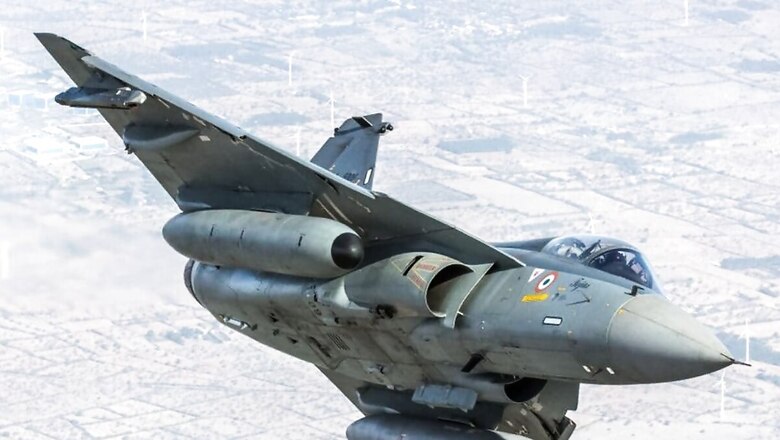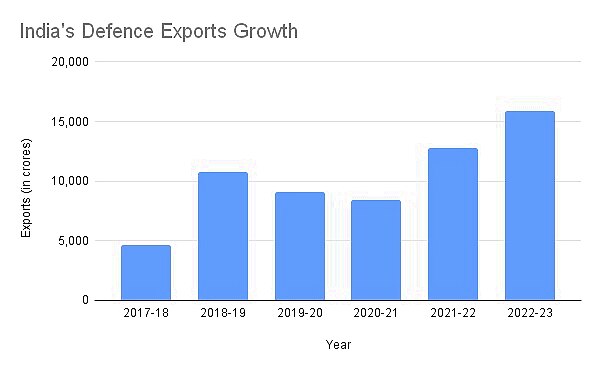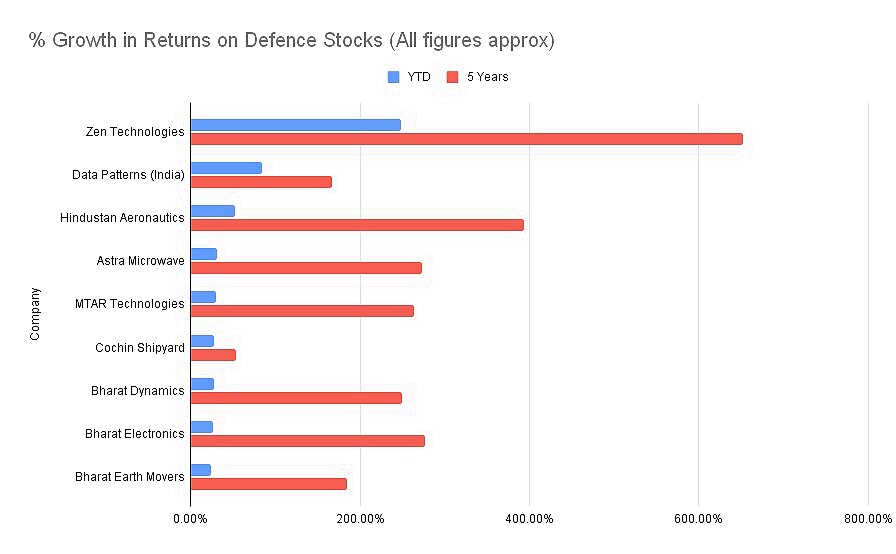
views
India’s defence manufacturing sector has witnessed a remarkable transformation in recent years, with a strategic shift from being a major importer to a budding exporter. This metamorphosis is a testament to the Narendra Modi government’s unwavering commitment to bolstering domestic manufacturing and reducing dependency on imports.
Speaking at Aero India show earlier this year, PM Modi said, “Our target is to take defence exports to $5 billion by 2024-25. India will soon be the world’s largest defence manufacturing base.”
Pro-active policy
Under the Modi government, there have been active measures taken to drive indigenisation and promote exports, while reducing defence imports. To curtail imports ‘Positive Indigenisation Lists’ have been drawn up. Import embargoes have been enforced to promote local manufacturing.
The Modi government has also given support for the establishment of defence industrial corridors. It has done away with red tape, including the debilitating bureaucracy at the Ordnance Factory Board.
Significant steps have been taken in promoting MSMEs and encouraging defence innovation by startups. In fact, orders up to Rs 100 crore have been exclusively earmarked for domestic MSMEs.
Atmanirbhar Bharat has been an enabler, as India seeks to shed its reliance on external defence supply chains. Echoing the PM’s call for ‘Make in India, Make for the World’, India’s defence ecosystem has been seeking active foreign participation in domestic manufacturing.
Strategic partnership models encouraging foreign OEMs to set up domestic manufacturing units have been critical.
This includes manufacturing critical platforms like the Rafale, Akash missiles, Heron drones, etc. Boeing has begun manufacturing Apache helicopters in India in a joint venture with Tata.
Export boom
India has ambitious plans to become part of the global defence supply chains. The 2020 Draft Defence Production and Export Promotion Policy had laid out a vision to reach a turnover of Rs 1.75 lakh crore by 2025, with 30% coming from exports. Defence exports in FY23 had reached an all-time high of approximately Rs 16,000 crore. This was a tenfold increase since 2016-17.
The government is taking several initiatives to boost exports:
- Promoting joint ventures between Indian and foreign defence companies.
- Providing financial incentives to defence exporters.
- Facilitating the export of defence products through government-to-government deals.

Today, India exports to over 85 countries, with 100 firms actively exporting defence products. Major export destinations for Indian defence products are:
1) Nepal, Bangladesh, Sri Lanka, Maldives, and Bhutan in South Asia
2) Indonesia, Malaysia, and Singapore in Southeast Asia
3) UAE, Saudi Arabia, Qatar, and Iraq in West Asia
4) Egypt, Ethiopia, and Kenya in Africa
5) Chile and Peru in Latin America
The ability to produce cost-effective equipment makes India a solid defence partner for developing economies in Asia and Africa.
Indian companies also have orders from US defence majors to supply parts for platforms like the F16, Chinook and Apache helicopters. In fact, India is in early-level talks with the US for a Security of Supply Arrangement and Reciprocal Defence Procurement Agreement, which would put it in a club of 26 countries allowed to supply major components and parts for American military orders.
India exports a variety of military equipment including Dornier-228, 155 mm Advanced Towed Artillery Guns, Brahmos Missiles, Akash Missile Systems, Mine Protected Vehicles, Armoured Vehicles, PINAKA Rockets & Launchers, Thermal and various small arms. There is also growing interest in the Tejas and Dhruv aircraft.
Rising stock
The resurgence of India’s defence industry is evident in the market performance of PSUs and private defence companies alike. Mazgaon Docks, Cochin Shipyard, Bharat Dynamics and Hindustan Aeronautics Limited have all seen their shares skyrocket on the strength of new orders, which underscore India’s growing prowess in the defence manufacturing sector.

Expos to the world
India has been actively participating in and hosting defence expos to showcase its growing capabilities in defence manufacturing and technology.
The Aero India show has become a fixture in the international aviation calendar. The participation of 104 countries in Aero India 2023 further attests to India’s burgeoning defence manufacturing industry.
The 12th DefExpo held in 2022 in Gandhinagar was the largest-ever defence exhibition to date and marked India’s defence industry as a sunrise sector for investment on a global scale.
Apart from hosting expos, India has also been a prominent participant in international defence exhibitions like Defence Services Asia Exhibition & Conference, Eurosatory & SITDEF. These platforms have provided an opportunity for Indian companies to showcase their equipment and clinch international deals.
PM Modi’s efforts to develop a self-reliant defence industry are essential for India’s national security. A strong defence sector will help India to meet its needs and become a major arms supplier to the world. In fact, India has the potential to become another Israel when it comes to defence exports. This will give India greater strategic clout and reduce vulnerability to geopolitical shocks.













Comments
0 comment